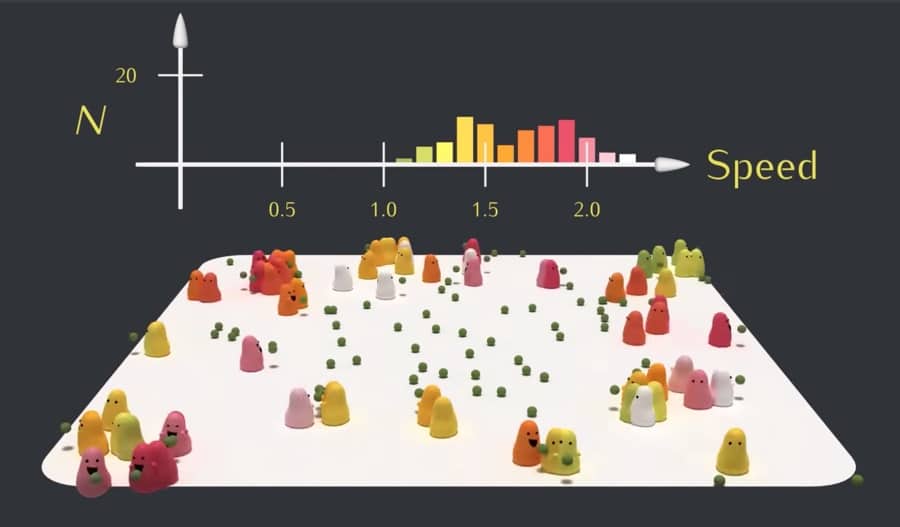What is natural selection? What factors cause a population of animals to thrive or die out over generations? Is it better to be fast, big, or have stronger senses in a particular environment?
In Primer‘s fifth video on evolution, Justin Helps creates a blender and python-powered natural selection simulation, testing for variations on food availability along with the creatures’ speed, sizes, and their ability to sense food. The only predators within the simulation are creatures whose larger size allows them to eat an average-size creature.

Natural selection is a key component of evolution. Which traits and combinations will win out in this simulated environment? A quick explanation from PBS.org:
In the process of natural selection, individuals in a population who are well-adapted to a particular set of environmental conditions have an advantage over those who are not so well adapted. The advantage comes in the form of survival and reproductive success. For example, those individuals who are better able to find and use a food resource will, on average, live longer and produce more offspring than those who are less successful at finding food. Inherited traits that increase individuals’ fitness are then passed to their offspring, thus giving the offspring the same advantages.

Learn more about evolution and natural selection at Khan Academy, where Helps worked on the content team for five years.
Watch more videos about evolution, including PBS’ Evolution 101 & how natural selection works and It’s Okay to Be Smart’s The 12 Days of Evolution.
via The Awesomer.
Curated, kid-friendly, independently-published. Support this mission by becoming a sustaining member today.


